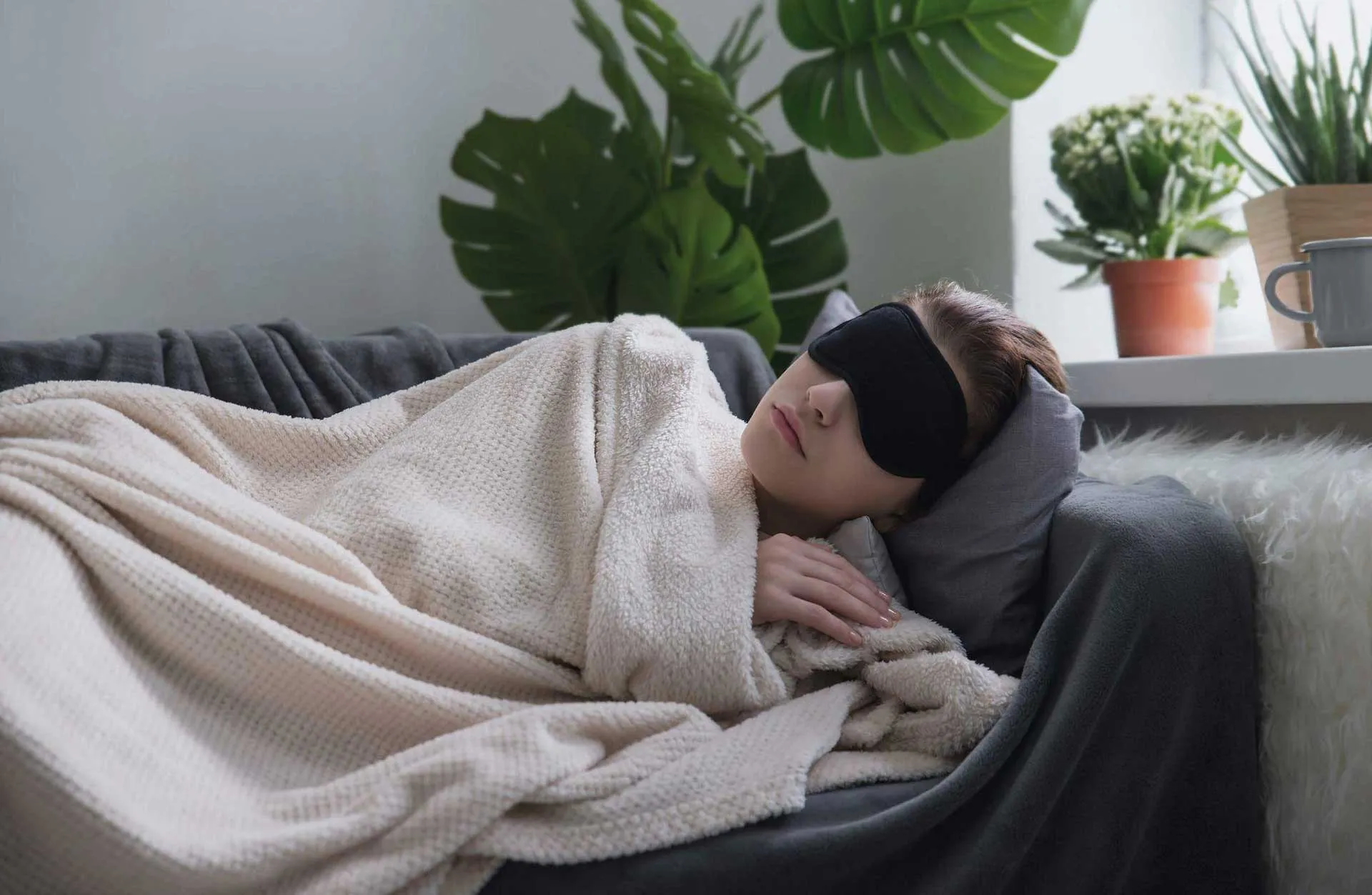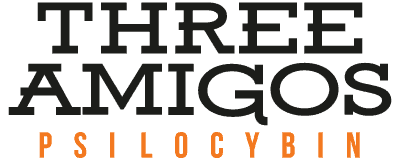
PARTNERSHIP WITH P.A.T.H. THERAPY
Announcement
Three Amigos is thrilled to announce a partnership with P.A.T.H. Therapy. They specialize in online psychedelic therapy and provide safe and supported trip planning and integration therapy for individuals across Canada. We have included our guide on Psychedelic Therapy below; we hope you find it helpful!
WHY P.A.T.H. THERAPY

P.A.T.H. believes in the power of a holistic approach to healing and growth, all from the comfort of your own home. Their team of licensed therapists has a passion for guiding their clients on their personal journeys towards better mental health.
Merging the power of psilocybin therapy with time-tested talk therapy techniques, clients are guided on a unique journey towards mental clarity and well-being. Their approach is meticulous and caring—prioritising safety, structure, and support at every step.
THE P.A.T.H. APPROACH

You will meet with your therapist to have an in-depth intake session to discuss your health and personal history, as well as your reasons for seeking psilocybin therapy. This initial session allows your therapist to further gauge your eligibility.
Following that, you’ll work through several deep dive therapy and intention setting sessions with your therapist. In these sessions with your therapist, you’ll prepare for your journey. You’ll build rapport with your therapist, explore your life’s story, delve into your intention for your trip, and ensure you’re resourced for your upcoming journey. You will also work with your therapist to identify a trip sitter in your life. Your trip sitter will join you and your therapist in session to ensure they’re equipped to best support you during your journey.
After your journey, you will work with your therapist to integrate any insights or shifts that may have come up during your journey. It is during this ongoing phase where the most profound and long lasting changes occur.
Visit P.A.T.H. Therapy today to learn more, or to book an online appointment.
We, Amigos, believe in a better future for all Canadians struggling with mental health-related issues.
Thank you
Professor, Merlin and Dreamer
The Three Amigos
PSYCHEDELIC THERAPY: EVERYTHING YOU NEED TO KNOW ABOUT THIS EMERGING FIELD
Like any health fad, the allure of potential will draw people in. When practicing and using herbal treatments, knowing their properties, stories and uses is essential. The medical potential of magic mushrooms is coming to light, and science is discovering new benefits. We will take a deep dive into the world of psychedelic therapy.
Magic mushrooms have been around for thousands of years and many cultures used them for ceremonies and other events. The Aztecs, Mayans, and Olmec people used mushrooms’ psychedelic effects to heal and reach an elevated state of mind. The magic from these mushrooms is derived from a fungus — psilocybin.
What is psilocybin?

Psilocybin is the chemical compound found in over 200 species of mushrooms; when someone ingests the fungi, they process the chemical to make psilocin. Similar to how our body breaks down food for carbohydrates for energy or vitamins to boost our immune systems, psilocin alters the neural receptors to induce an altered state of mind.
History of Psilocybin & Magic Mushrooms
There is a rich history of psilocybin use, possibly first recorded in 10,000 B.C. Archaeologists found cave paintings referring to magic mushrooms in northern Australia. We may never know when the people tried the drug, but we do know that North American European descendants only started using shrooms in the 20th century.
In 1955, amateur scientist R. Gordon Wasson traveled to Mexico with his wife and a few friends. They became the first outsiders invited to the religious ceremony of the indigenous Mazatecs. Wasson brought magic mushrooms home to New York City and began his experiments.
Wasson published a piece in Life magazine about his experiences with mushrooms and their journey with the Mazatec tribe. “As the ritual proceeded, Wasson lost himself in wonderous flights of fancy in which moved him to say afterward, ‘for the first time the word ecstasy took on a real meaning.’” With this magazine’s publishing, the world of psychedelic mushrooms exploded in the United States and Canada. Three years later, the Harvard Psilocybin Project began with two psychologists, Timothy Leary and Richard Alpert. The focus of the study was to see how the drug interacted with the subject’s perception, emotion, and cognition.
Shortly after, many states outlawed the substance and its stronger synthetic counterpart LSD. In 1970, the United States’ Controlled Substances Act became law, where psilocybin and LSD were categorized as schedule 1 drugs — making them illegal at the state and federal levels.
Flash forward to 2018, the FDA designated magic mushrooms as a ‘Breakthrough Therapy.’ Medical practitioners have begun to recognize shrooms’ potential to help people with treatment-resistant illnesses, and research on shrooms found itself in higher priority. Over the past four years, we have seen more advancements in therapeutic methods.
How does psilocybin work?
Psilocybin works by interacting with the brain’s neural reactors, specifically in the brain’s prefrontal cortex. This part of the brain contains our serotonin receptors, affecting our mood, cognition, and perception. Serotonin is the chemical responsible for a person’s feelings of calm, focus, and happiness. Dopamine differs from the other ‘happy chemical,’ focusing on pleasure, motivation, and productivity. Psilocybin primarily works with the serotonin receptors but reacts with the dopamine ones on a secondary level, increasing dopamine transmission.
WHAT IS PSILOCYBIN THERAPY?
Psilocybin therapy is the practice of using a drug to stimulate the mind and having the same psychological support from a therapist to guide you.
Since this therapy is new and yet to be fully understood, very few clinics have permission to administer the practice. Only patients with a chronic illness, treatment-resistant depression or anxiety, and those with PTSD gain legal exemptions to participate in psychedelic therapy.
There is much more happening with the clinical trials beyond eating a handful of mushrooms and exploring the visuals. Typically the patients will begin with up to six weeks of conventional therapy before taking their first dose. Following these sessions will be integrated sessions where the patient and therapist can reflect on and discuss the recent trip session.
Due to the newness of these programs, everything is strictly regulated and overseen. However, they are showing promising results in their preliminary trials.
Psilocybin therapy vs. conventional mental health treatments
To understand psilocybin therapy, one must understand what conventional treatment looks like. There are four main branches of traditional therapy: cognitive behavioural therapy (CBT), psychodynamic therapy, humanistic therapy, and dialectical behavioural therapy (DBT). Each technique alters the approach to therapy sessions differently depending on the therapist and the patient. Let’s break down each to understand these differences.
Cognitive-behavioural therapy heavily focuses on mindfulness. The patient will often explore their darker thoughts and learn new practices to alter their understanding of these events and how to change them. CBT helps recognize negative thoughts or behaviours that could hold a patient back and explores how changing these thoughts can alter behaviour and actions.
Psychodynamic therapy focuses on how you react to situations in the present day and how previous events may influence these reactions—looking deeper into your relationships and how they have affected your psyche in the long run. Psychodynamic therapy is taking a deeper dive into the emotional processes your mind took and understanding them to be the reason you are who you are today.
Humanistic or person-centred therapy is much different; instead of taking a deeper dive into your past or changing how you perceive and react to your emotions, it focuses on your unique lens of the world. The idea is that absorbing or taking on others’ negative views can hurt who you are as a person and, in turn, emphasizes the importance of your true self to lead a fulfilling life.
The final form of traditional therapy is dialectical therapy. This therapy is for patients suffering from personality issues and interpersonal conflicts. DBT is about accepting your surroundings and changing strategies for more effective interpersonal relationships.
What does a psilocybin therapy session look like?

Let’s look into the new world of psilocybin therapy. Before taking mushrooms for treatment, some patients are required to complete substantial paperwork and complete sessions with a licensed counselor to determine if they are eligible for psychedelic therapy.
We will break down the different parts of a typical psilocybin session. The overall experience is three-fold: preparation, the session itself, followed by integration.
There are two options for psychedelic therapy: online and in-person. Let’s break them both down.
- Online Psychedelic Therapy
- The patient registers online and fills out a form with a range of questions to help the counselor better understand the client. P.A.T.H.’s fully licensed counselors make your mental health journey more affordable by allowing you to claim a portion of the costs through insurance benefits.
- The patient meets with a licensed therapist online to learn whether they are suited for psychedelic therapy
- The client undergoes deep dive therapy sessions and intention session prior to the psychedelic experience
- The counselor trains the clients and their trip sitter prior to the psychedelic experience
- A final preparatory session is done to go over patient expectations prior to the psychedelic session.
- The trip sitter supports the patient throughout the entire psychedelic experience, for up to 8 or 10 hours.
- The patient uses aids like eyeshades and is supplied with preselected music playlists and encouraged to ‘let go’ as they see where the plant medicine wants to take them.
- In some cases, patients repeat the above psychedelic session as many times as necessary.
- After the psychedelic session is over, several shorter ‘integrating’ sessions help the patient incorporate their realizations into their conceptualization of who they are!
- The client can then continue with non-psychedelic therapy for as long as they’d like with their counselor, sometimes choosing to repeat psychedelic therapy at a later date.
- Visit A.T.H. Therapy to find out more about online psychedelic therapy, or to get started today.
- In-Person Psychedelic Therapy
- The patient meets with a pair of therapists, most commonly a male and female.
- The patient and therapists undergo several traditional therapy sessions.
- These ‘preparatory’ sessions are used to build rapport and increase trust.
- A final preparatory session is done to go over patient expectations prior to the psychedelic session.
- The therapists support the patient throughout the entire psychedelic experience, for up to 8 or 10 hours.
- The patient is provided with aids like eyeshades and preselected music playlists and encouraged to ‘let go’ as they see where the plant medicine wants to take them.
- In some cases, patients repeat the above psychedelic session as many times as necessary.
- After the psychedelic session is over, several shorter ‘integrating’ sessions help the patient incorporate their realizations into their conceptualization of who they are!.
In both online and in-person types of therapy, patients must go through a few traditional therapy sessions leading up to the psilocybin session. These sessions allow the patient and their therapist to bond and choose a topic to focus on during the psilocybin sessions. This may be a specific event or trauma or a recurring feeling that holds the patient back. Having one topic in mind heading into the session makes it easier for the patient to stay on topic and break down its parts.
The integrated sessions after the trip are to discuss experiences and thought processes that took place during the psilocybin session. This step is vital because it allows the patient to gain insights from the session. The patient then has the choice to continue on with that therapist to continue receiving traditional types of therapy, or for additional psychedelic therapy sessions.
How effective is psilocybin therapy?

New studies at the University of California have found potential new ways in which psychedelics affect the brain. This study is significant for the advancements in psilocybin therapy and gives excellent insight into its effectiveness.
There were two trials with 60 participants overall. The first trial included patients with treatment-resistant depression who received doses of psilocybin. A control group was a placebo sugar pill or a common SSRI antidepressant. Both groups received fMRI scans to show brains connectivity before testing. Once the groups had completed the trials, they were rescanned to find the differences in brain connectivity .
The first group with psilocybin returned dramatic results, showing less connection within brain regions associated with depression. New connections were formed in different parts of the brain, the patients were less emotionally avoidant, and their cognitive function increased. The control group showed no change in brain connectivity.
Another study had important findings. The Imperial College London selected 43 patients tested in the severe major depressive disorder range. Similarly, one group of participants was the control subjects who only took an SSRI medication, and the others received psilocybin. Both groups had fMRIs taken one day before the sessions and another three weeks after.
Like the University of California results, the control subjects showed slight improvement. In contrast, the psilocybin group displayed a liberating change, even three weeks after the session. The chemical derived from psychedelic mushrooms helped alleviate symptoms of depression and generated detectable neural responses that lasted weeks.
Psilocybin therapy in Canada
Currently, Canada is working on a case-by-case basis. Health Canada is trying to expedite the process and is working to have each application processed within two days.
TheraPsil is a non-profit organization based out of Victoria that advocates for patients who need psychedelic therapy for their treatment-resistant or terminal illnesses. TheraPsil has worked to get 55 Canadians a medical exemption through subsection 56(1) of the Controlled Drugs and Substances Act. This exemption clears the path to receiving a prescription for MDMA or psilocybin.
However, it is important to remember that most people get rejected and the health minister can deem all of the applications rejected at once if they feel like there is a viable threat to the health and safety of the public.
How can I find a psilocybin-friendly therapist?
The easiest way to find a psilocybin-friendly therapist is to visit P.A.T.H. Therapy, which offers online psychedelic therapy across Canada, or for in-person therapy, use the therapist database our team at Three Amigos has made! We’ve broken down which therapists are open to the idea of psilocybin therapy city-by-city. With info on cities from Vancouver, British Columbia all the way to St. Johns in Newfoundland, you should be able to find a psilocybin-friendly therapist near you.
We have provided links to each therapist’s website and urge you to do some research before booking that first appointment. Remember, psilocybin therapy is most effective if you have created a real bond and trust with your therapist. Ingesting psychedelics places you into a more vulnerable state and having a good support system to help you is the most effective.
Downsides of psilocybin therapy
To know whether psilocybin therapy is a good option for you, you need to know all of the facts. Good and bad. With any therapy, there will be downsides to the treatment. Mixing in experimental drugs can take it to a different level; if taking a psychedelic in a controlled environment like an office gives you anxiety, don’t do it. A bad trip can happen if you enter the session with doubt and worry.
According to a study by Theresa M. Carbonaro, 10.7% of those undergoing psilocybin therapy reported creating a situation that put themselves or others at risk of physical harm. 2.6% of the survey takers reported being violent or aggressive towards themselves or others.
An eye mask is to help keep the person calm and internalize the feelings, but there have been cases where patients did not wear an eye mask, and the visual effects of psilocybin impacted the patient’s session. The hallucinations from psilocybin may overwhelm the patients and create extreme anxiety, paranoia, and a lost sense of reality. With this in mind, most medical professionals and researchers discount self-reported data because it lacks objectivity.
Side effects of psilocybin can vary from person to person and illness to illness, just like any drug. A few widely reported side effects include; confusion, fear, hallucinations, high blood pressure, nausea, and headaches. These side effects are the reason a patient must undergo such an extensive preparation period. No therapist should ever put a patient into a position they aren’t ready for mentally, physically, or emotionally.
Most treatments will have positives and negatives; listening to how you’re feeling is vital. Psilocybin therapy is showing exciting progress so far; keep an eye out for what else comes to light in the future.
Make an appointment with P.A.T.H. Therapy today to determine if psychedelic therapy is for you!
